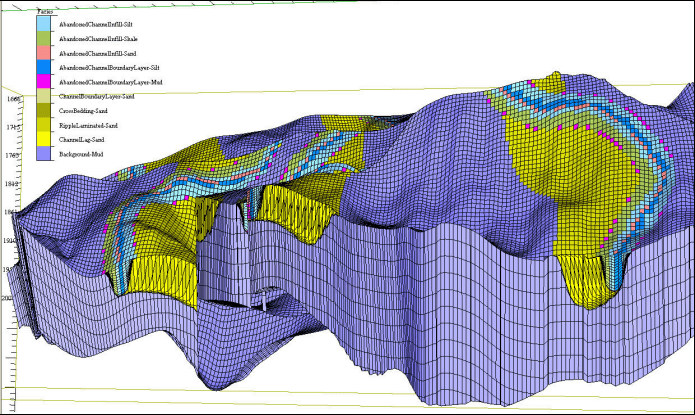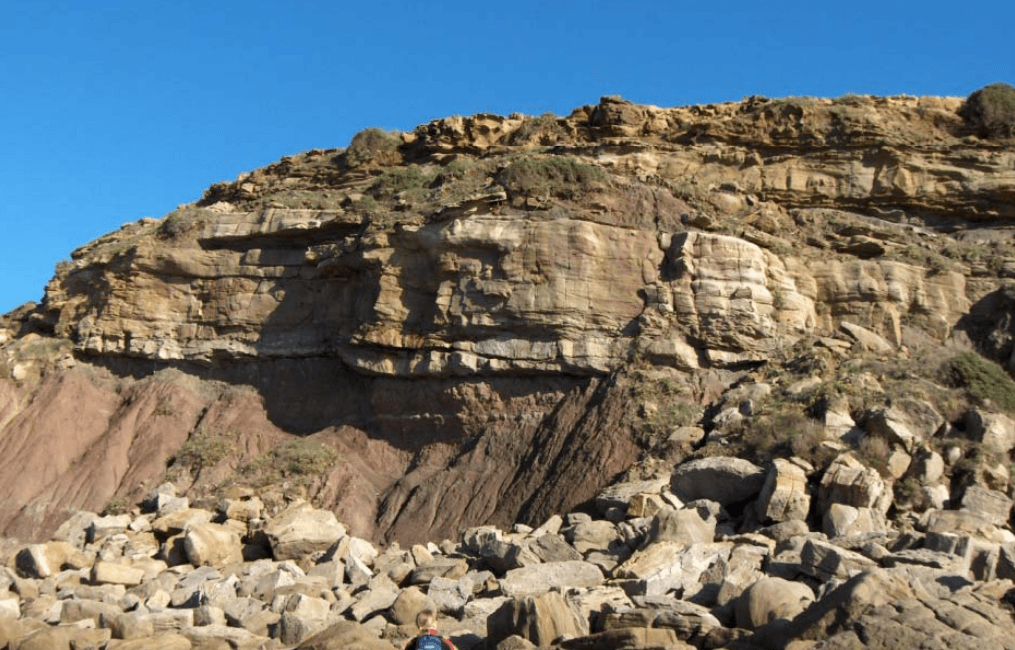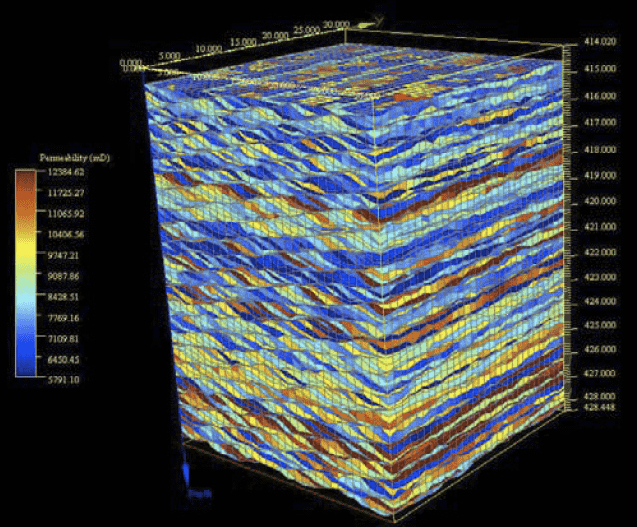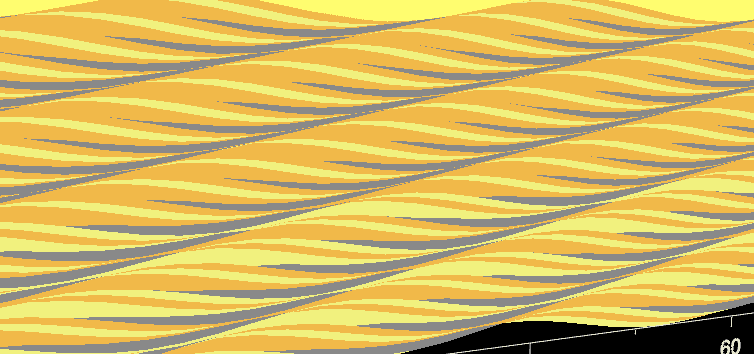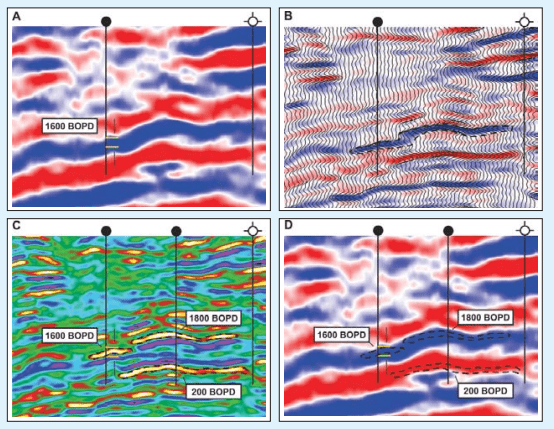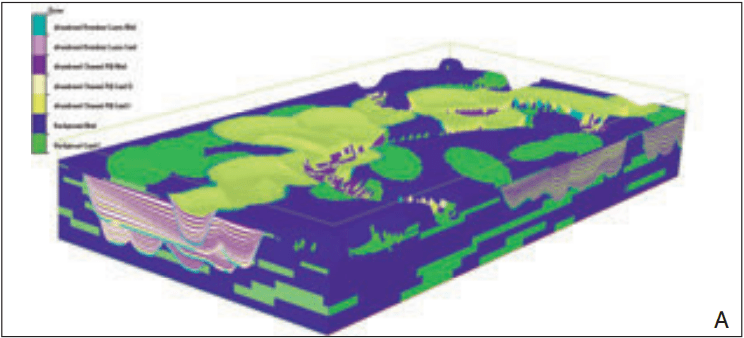Improve Channel Reservoir Characterization By Combining Seismic Imaging with Geologic Process Accurate identification and portrayal of a channel system is rarely easy. Exploiting it is even harder. The depositional processes and crosscutting relationships do not leave behind simple linear features with welldefined boundaries. Conventional examination of poststack seismic reflections leaves...
Multiscale Data Integration in Characterizing and Modeling a Deepwater Turbidite Reservoir
Information from cores and wireline logs, processed according to different methodologies, were integrated to provide a consistent facies classification, petrophysical characterization and 3D geological model of a deep-water turbidite reservoir in the Gulf of Mexico. A number of sedimentological facies (sed-facies), either heterolithics or single-lithology, were first identified on cores...
Modeling of Intra-Channel Belt Depositional Architecture in Fluvial Reservoir Analogs from the Lourinha Formation, Portugal
Fluvial channel and channel belt deposits are commonly represented in subsurface reservoir models using an object-based approach that stochastically places a channel facies in a background of overbank deposits. The internal heterogeneity within the channel is usually represented by adding intra-body trends to the petrophysics. The aim of this study...
Pore Space Estimation, Upscaling and Uncertainty Modelling for Multiphase Properties
This paper reports results from a sensitivity study aimed at understanding and evaluating uncertainty in a pore-to-field workflow. A methodology to identify and quantify uncertainty at different scales and to propagate, or upscale, this information to the reservoir simulation model has been developed and tested. A case study is presented...
Core-Data Preprocessing To Improve Permeability-Log Estimation
Two techniques of preprocessing data from core plugs have been investigated to enhance the quality of synthetic permeability estimation from conventional logs by use of artificial neural networks (ANNs). A first technique consists of “cleaning” the core-plug data set by removing the measurements deemed log-incompatible (i.e., those from plugs corresponding...
Improving Net-to-Gross Reservoir Estimation with Small-Scale Geological Modeling
Geoscientists have often been frustrated by the arbitrary assignment of petrophysical log cut-offs to define reservoir intervals capable of hosting producible hydrocarbon. The traditional practice is to derive "pseudo-permeability" from well logs such as gamma ray, density, and sonic. However, this indirect approach can introduce large errors in estimates of...
Enhancing Reservoir Visualization with Spectral Decomposition
Spectral decomposition adds value to visualization and interpretation workflows by revealing details normally overlooked in full bandwidth seismic displays. In Alberta's Blackfoot field, the oil- and gas-producing Lower Cretaceous Glauconite Member contains shales and quartz sands of lacustrian and channel origin. The hydrocarbon reservoirs typically occur where the porous sands...
Implicit net-to-gross in the petrophysical characterization of thin-layered reservoirs
A new workflow has been devised to characterize the petrophysical properties of two, thin-layered, heterolithic log facies from a turbidite reservoir. The methodology is based on a published modelling technique that enables an extremely accurate reconstruction of the fine-scale lithological and sedimentological reservoir heterogeneities and a thorough integration of petrophysical...
Seeing between a rock and a hard place
Braided fluvial reservoirs can host significant volumes of hydro-carbons, being high net/gross ratio, and are often considered to be relatively easy to characterize. But this is not always the case, as confirmed in a recent study conducted by Houston-based reservoir services company Geotrace Technologies Inc. The Misoa Sandstone reservoir in...
3D geologic modelling of channelized reservoirs: applications in seismic attribute facies classification
Geological models are usually used qualitatively in seismic interpretation. This paper illustrates that quantitative representations of detailed geological models can significantly enhance seismic attribute interpretation through facies classification. When applying seismic attribute classification to reservoir facies mapping, one often faces such typical questions as: Which attributes should be used as...

